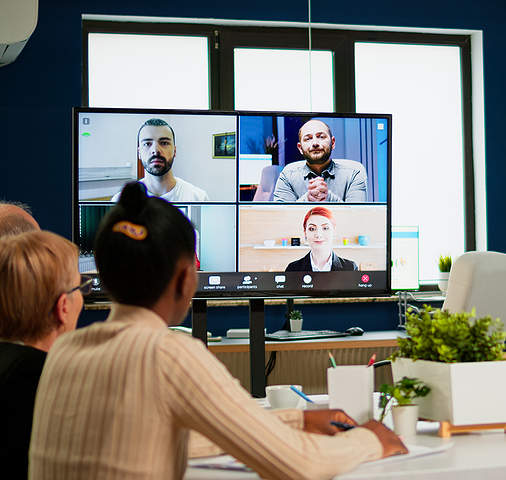Webinars are an important tool that organizations can use to share information. Many of us organized or attended a webinar in the past year as in-person gatherings and conferences were postponed or canceled because of COVID-19. We learned these presentations can be effective when done right.

One of the most important things to think about when planning a webinar is your audience. Who do you want to share information with? What do you want them to learn, remember or act as a result of your presentation? Answering those questions is a great way to start.
The Blue Cross of Idaho Foundation for Health assisted fellow nonprofit, Idaho Hunger Relief Task Force (IHRTF), on a series of webinars to share the positive results of an evaluation of its food prescription program. IHRTF wanted to share this evaluation with a myriad of organizations, each of which would be interested in different aspects of the program. We knew it was crucial to present the findings in a way that resonated with each audience.
We partnered with IHRTF on five different webinars and tailored the content of each session to address aspects of the evaluation that would interest and engage each audience. Sure, it was a little more work to adjust the presentations, but it was worth it. IHRTF received several inquiries from attendees interested in supporting the program. At least two of them are working on potential partnerships with IHRTF.
In addition to targeting presentations to the audience, there are other things we do to make webinars effective:
[su_list]
- Ask icebreaker questions in the chat
- Use Zoom polls and breakout rooms to create engagement
- Explore using platforms alongside Zoom, such as Mentimeter or Miro, for additional ways to engage participants
[/su_list]
PRACTICE, PLAN AND SHARE
Taking the time to rehearse a webinar is beneficial. Presenters can become more comfortable with the material, and the dress rehearsal can determine how much time each section or slide will take to present. Practicing helps ensure there will be ample time for attendees to ask questions, which is important. We recommend asking and answering questions after each section, as well as at the end of the webinar.
When it comes to fielding and answering questions, it’s helpful to designate someone from the host organization to moderate questions to ensure they are answered. Questions can be asked in the chat, by using Zoom’s “raising hand” function or via Mentimeter.
If the webinar is longer than an hour, schedule a short break or two. It is helpful to communicate specified break times with the audience at the beginning of the webinar.
The last — and arguably most important — best practice is to provide the appropriate contact information at the end of the webinar. If you are sharing any content from the presentation, be sure to follow through and send the materials in timely fashion.
These simple tips can help make your webinar effective and compelling to the attendees.
